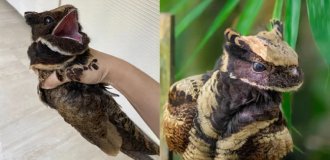15 rarest animals in the world that are on the verge of extinction (16 photos)
The wildlife of the planet Earth is rich and diverse, but, alas, in Nowadays, many animals are endangered. to someone for example, elephants, gorillas and tigers are given enough attention, but about many spiders or birds most people have not even heard of. However absolutely all animals are important for the biodiversity of the Earth, and that is why today we remember a variety of species listed in the Red Book as endangered. 
1. Far Eastern leopard 
Scientific name:
Panthera pardus orientalis
Lifespan:
10 to 15 years old
Habitat:
Far East
Population (in the wild, approximately):
120 individuals
Far Eastern leopard, aka Amur or East Siberian leopard, lives in the Far East, in the area of the junction the borders of two countries - China and North Korea. They are considered one of the rarest big cats on Earth, and their population has declined up to about 120 due to poaching (both leopards themselves and their main prey, deer) and habitat loss due to deforestation. The small population of the Far Eastern leopard also makes it susceptible to inbreeding problems. Uniquely tailored to cold weather, they inhabit a small territory of 7000 square kilometers and are unsociable animals that can only be seen thanks to camera traps. Alliance for the Conservation of the Far Eastern Leopard and Amur tiger (ALTA) is engaged in the conservation of the existing population and an increase in its numbers.
2 Black Rhino 
Scientific name:
Diceros bicornis
Lifespan:
35 to 40 years old
Habitat:
East and South Africa
Population (in the wild, approximately):
5 500
Unfortunately, the black rhinoceros is just one of the species of rhinoceros which are in danger of extinction. Along with Javan rhinoceros and Sumatran rhinoceros, black rhinoceros close to extinction: three subspecies already declared extinct (the last one in 2011), and conservationists are fighting to lest he suffer the same fate. Fortunately, according to an IUCN report, The black rhino population has increased by 12% from 2015 to 2021. This coincides with a decrease in poaching. But at the same time, threats related to habitat change and competing species, are still of concern.
3. Kalimantan orangutan 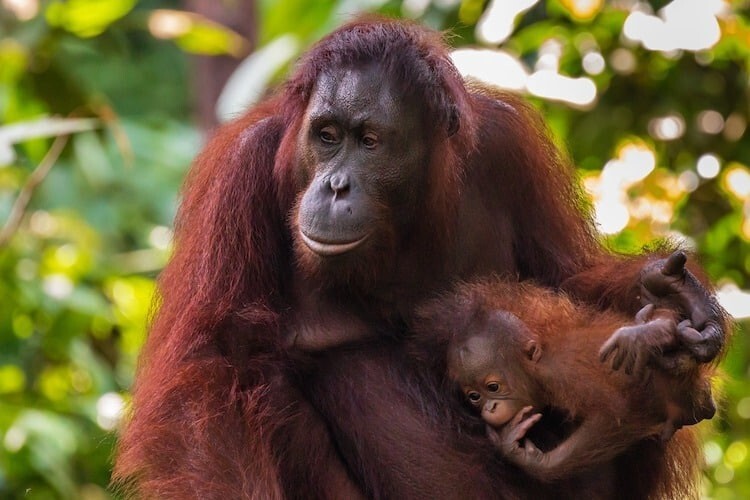
Scientific name:
Pongo pygmaeus
Lifespan:
35 to 45 years old
Habitat:
Kalimantan (Borneo)
Population (in the wild, approximately):
105 000
Orangutans are incredibly smart animals with 97% DNA matches human DNA. But, unfortunately, all three currently existing orangutan species are endangered: the Kalimantan orangutan, sumatran and tapanul. As the name suggests, The Kalimantan orangutan lives on the island of Kalimantan (or Borneo). This the largest tree-dwelling monkeys, and they are exposed to a lot of threatened by habitat and bushmeat trade. Just 20 years, their habitat has been reduced by 55%. Although they are more numerous, than the Sumatran orangutans, whose population is about 14,000 individuals, the population of the Kalimantan orangutan has decreased by 50% over the last 60 years.
4 River Gorilla 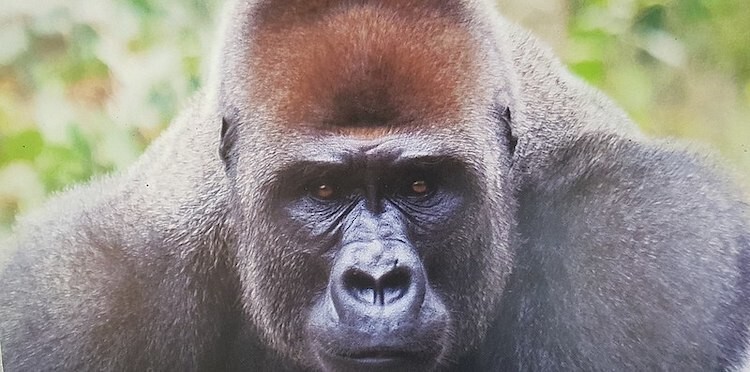
Scientific name:
Gorilla gorilla diehli
Lifespan:
from 35 to 50 years
Habitat:
Cameroon-Nigerian border
Population (in the wild, approximately):
200-300 individuals
Although the river gorilla was first described in 1904, its officially isolated as a separate species only in 1987. All because this rare gorilla lives in the rugged terrain on the border Cameroon and Nigeria and fearful of people. Scientists estimate tiny population of this species by counting their nests and calculating the estimated range a habitat. These gorillas need an abundance of uninhabited forests to live, and, unfortunately, deforestation and land fragmentation have made it difficult for them to survival. Alas, this is just one of the many species of gorillas in the Central Africa,which are in danger of extinction. Western lowland gorilla and the eastern lowland gorilla is also listed under the threat of extinction. Civil wars, especially in the Democratic Republic of the Congo (DRC), exacerbated adverse conditions for eastern lowland gorilla, including poaching. But there is also good news: the mountain gorilla, which also lives in the DRC, has grown in the population thanks to the efforts of environmental activists, although it still remains in list of endangered species.
5. Forest elephant 
Scientific name:
Loxodonta cyclotis
Lifespan:
60 to 70 years old
Habitat:
Central Africa
Population (in the wild, approximately):
200 000
The African forest elephant is listed as under endangered species in 2021: mainly due to the threat of loss and habitat fragmentation; and poaching for tusks and meat. It is the smallest of the surviving elephant species and one of two elephants living in Africa. Because forest elephants live in dense forests West Africa and the Congo Basin, it is difficult to calculate the population, but according to one estimate, between 2002 and 2011 it decreased by 62%. Due to fragmentation and habitat loss, these elephants are often have to be limited to small areas where food is scarce. A given the low breeding rate, it is difficult for these populations to recover from loss. The river elephant plays a big role in the environment as they help spread fruit seeds, who eat, which maintains biodiversity.
6. Sumatran tiger 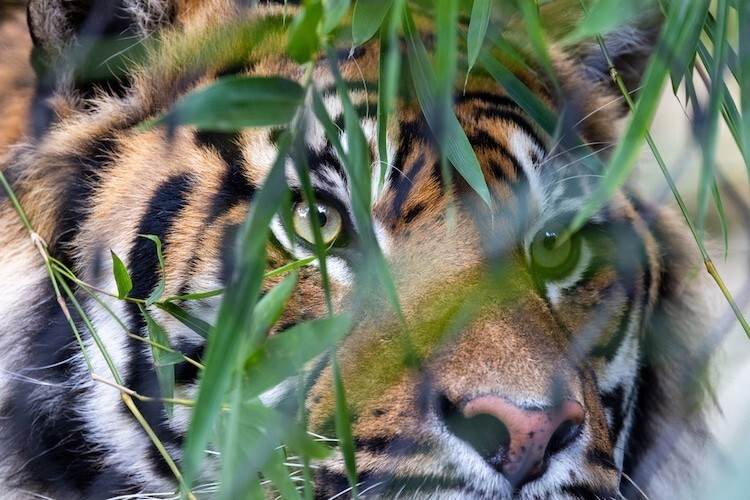
Scientific name:
Panthera tigris sumatrae
Lifespan:
18 to 25 years old
Habitat:
Sumatra
Population (in the wild, approximately):
less than 400 individuals
The Sumatran tiger is the only remaining species tiger in the Sunda Islands after the disappearance of the Balinese and Javanese tigers. The population of the species has declined significantly, mainly due to the loss of habitat, prey depletion and poaching. Plantation expansion palm oil and acacia plantations have affected large areas of forest, necessary for these tigers to survive. The population was also affected climate change, as temperature changes forced the remaining tigers move to areas where there are much more people and animals conflict.
7. Chinese lizard (pangolin) 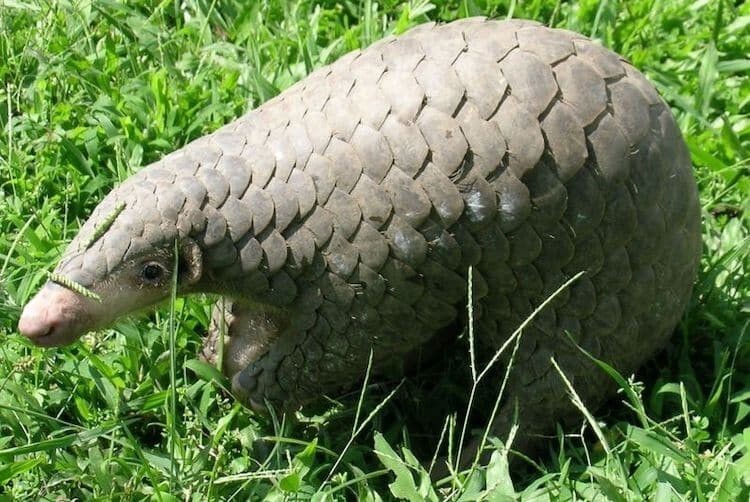
Scientific name:
Manis pentadactyla
Lifespan:
unknown
Habitat:
Southern China, northern Indian subcontinent and northern Southeast Asia
Population (in the wild, approximately):
unknown
The Chinese lizard, or Chinese pangolin, is one of four pangolin species found in Asia. This nocturnal animal is easily recognizable by scales, feeds on ants and termites. The biggest threat to China lizards are people. Over the past 60 years, the wild population has declined by 80% due to poaching, since pangolin scales are used in traditional Chinese medicine, and the meat is considered edible. Behind In recent years, much more attention has been paid to the plight of all types of lizards, including the Chinese. Although with In the 1970s and 1980s, there was a law that prohibited the killing of pangolins, in many countries they could still be seen in illegal markets. IN In 2020, China officially removed pangolin scales from the list of ingredients, approved for use in traditional Chinese medicine.
8. Saola 
Scientific name:
Pseudoryx nghetinhensis
Lifespan:
8 to 12 years old
Habitat:
Vietnam and Laos
Population (in the wild, approximately):
from 25 to 750 individuals
Also known as the Asian unicorn, the saola is a large artiodactyl that lives in the ridge forest in Vietnam and Laos. The species was first described only in 1993, which made it the first discovery of a large mammal in 50 years. These elusive animals managed to photograph in the wild just a few times with the help of camera traps, and attempts to keep saola in captivity were unsuccessful: in in captivity, they lived only a few weeks or months. Researchers continue to learn new things about these animals, which are very shy and seldom seen peoplem on the eyes. Saolas are threatened by several factors: in basically falling into a trap that was meant for others animals. However, they are also hunted by locals who pride themselves on the rare prey. Viet Nam has placed restrictions on deforestation in an area where the Saolas live to stop the loss and fragmentation of their habitat.
9 California Condor 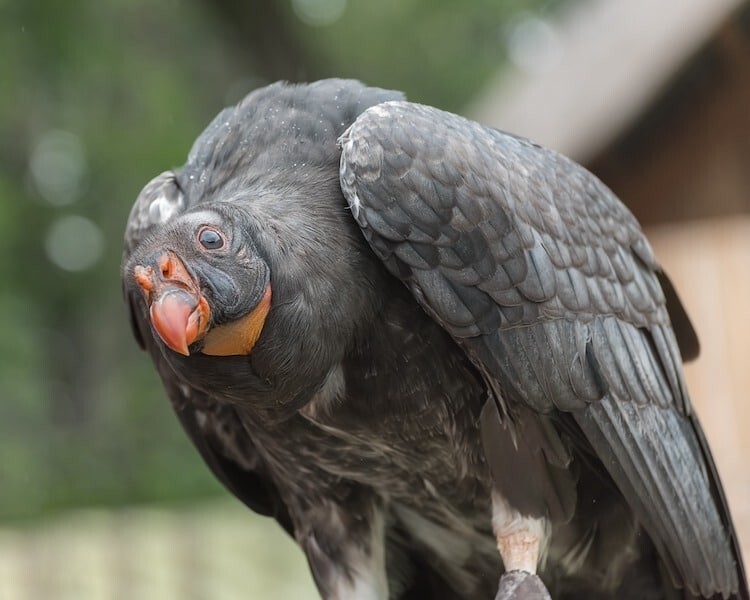
Scientific name:
Gymnogyps californianus
Lifespan:
60 years
Habitat:
Southwestern United States and Mexico
Population (in the wild, approximately):
500
The California Condor is a rare success story in the world endangered species. These giant birds are the largest terrestrial birds of North America and in 1987 were officially declared extinct in the wild. Around the same time, scientists managed to catch small wild population of only 27 birds and include it in breeding programs at the San Diego Wild Animal Park and Zoo Los Angeles. In 1991, when the number of captive-bred condors grown, they were released back into the wild. Today in the wild About 336 condors live, and another 201 live in captive breeding programs. So why are California condors threatened with extinction in the first place? Firstly, these birds reach sexual maturity rather late, and when this happens, the females lay as little as one egg every two years. Secondly, the condors poisoned themselves with lead, feeding on the carcasses of those killed by bullets. animals, and pesticides. Combined with slow reproduction, these two factors remain an obstacle to the survival of the species.
10. Mountain Blue Zyornis Flycatcher 
Scientific name:
Cyornis banyumas
Lifespan:
from 1 to 10 years
Habitat:
Java and Panaitan (Indonesia)
Population (in the wild, approximately):
from 100 to 1000 individuals
This little songbird was once one of the most common flycatchers on the islands of Java and Panayotan in Indonesia. Part of her disappearance is due to the fact that she is captured and sold in as poultry in a cage. In fact, over 98,000 Javanese blue flycatchers live in captivity and very few still live in the wild nature. It is estimated that the wild population has declined from about 60% up to 90% in the last few years, and fewer sellers are selling them on songbird markets in Indonesia.
11. Franklin Bumblebee 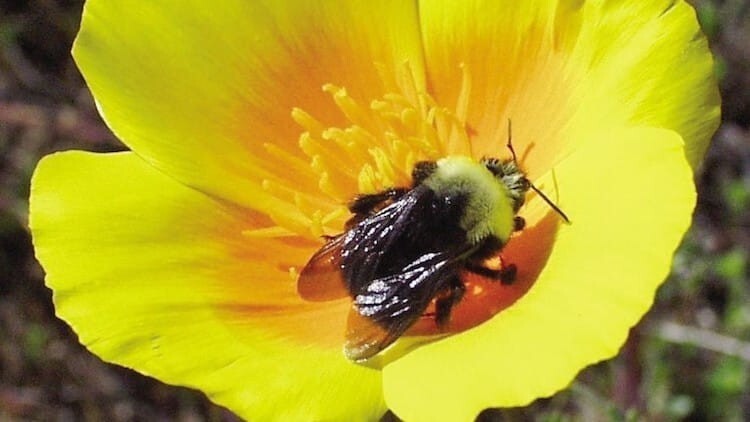
Scientific name:
Bombus franklini
Lifespan:
from 2 weeks to 1 year
Habitat:
Southern Oregon and Northern California
Population (in the wild, approximately):
unknown
Bee populations around the world are steadily declining, and the bumblebee Franklin is no exception. This species lives only on a small territories in southern Oregon and northern California between mountain ranges, and no one has been seen since 2006. Therefore, it is likely that the species is already extinct, but until this is officially confirmed, the bumblebee still listed as endangered. bumblebees Franklins collect nectar and pollen from local wildflowers and are distinguished bright black belly. So what happened to Franklin's bumblebee? TO unfortunately, the same thing that endangers all bees: commercial bees that transmit diseases, as well as planting non-native flowers, which deprive the bumblebee of a food source, pesticides and environmental destruction a habitat.
12 California porpoise 
Scientific name:
Phocoena sinus
Lifespan:
21 years old
Habitat:
Northern Gulf of California
Population (in the wild, approximately):
18
Dwelling in a small area of the waters of the northern part Gulf of California, this porpoise is the smallest living cetacean species. They are on the brink of extinction due to illegal totoaba fishing in Mexico. Totoaba, which is also is an endangered species, considered a delicacy in China and sold for a lot of money. In an attempt to hastily make money, the fishermen accidentally endangered the California porpoise. Because this kind was officially described by scientists only in the 1980s, it is impossible to know their population in the past. But one thing is certain: their small habitat combined with bycatch created a killer combination. IN July 2022 government MMexico has stepped up measures against illegal fisheries and began using acoustic sonar for detection of fishing nets in the area.
13. Svaino soft-bodied turtle 
Scientific name:
Rafetus swinhoei
Lifespan:
100 years
Habitat:
East and south of China, north of Vietnam
Population (in the wild, approximately):
3 individuals
One of the largest freshwater tortoises on Earth, the tortoise Svaino, is on the verge of extinction due to hunting and destruction her habitat. These turtles rarely come to the surface to breathe, making it difficult to find and identify them in the wild. IN one live male is currently in captivity at Suzhou Zoo in China. When his breeding partner died in 2019, it seemed that hope for this species is lost. But at the end of 2020, researchers positively identified a female living in a lake in Vietnam, with using DNA analysis. Another turtle was also spotted in the lake, and ecologists it is hoped that this is a male who can help save this species.
14. Giant hammerhead shark 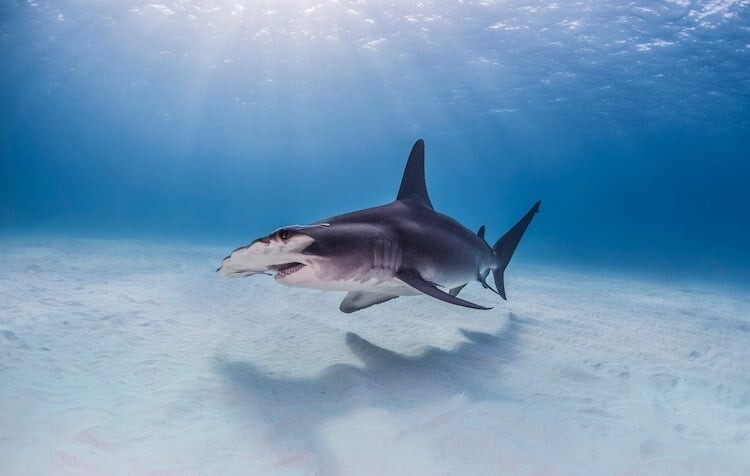
Scientific name:
Rafetus swinhoei
Lifespan:
20 to 30 years old
Habitat:
Around the world in warm oceans in shallow waters
Population (in the wild, approximately):
unknown
In 2019, the giant hammerhead shark was listed endangered species, as its global the population has declined by more than 80% over the past 70 years. largest of the hammerhead shark species, the great hammerhead shark has been affected by bycatch. This species is also heavily fished for its large fins, which are the main ingredient in shark soup. This predator rarely attacks on humans, preferring instead stingrays, small sharks, crustaceans and bony fish. Unfortunately, the giant hammerhead sharks continue endangered, but in 2022 the National Service US Marine Fisheries has decided not to add this species to its List endangered species (ESA).
15. Ultramarine tarantula 
Scientific name:
Poecilotheria metallica
Lifespan:
from 3 to 12 years
Habitat:
Reserve forest between Nandyal and Giddalur, India
Population (in the wild, approximately):
unknown
This unusual tarantula, covered with the hair of a metallic shade, is considered a variety of the Old World tarantula. His natural habitat - deciduous forest in the central part of the southern India, but now its range is limited to a small protected forest area 101 square kilometers. Unfortunately, the habitat of this species gradually destroyed due to logging, as a result of which it is now restricted to a small patch of forest. The ultramarine tarantula is so rare in the wild that in 2001 it was spotted for the first time in 102 years. Due to its unique appearance, the ultramarine tarantula popular among spider lovers and bred in captivity for at least ten years. Although the current population is unknown, limited environment habitation and popularity among illegal traders was enough, to list the species as endangered in 2008 disappearance.









